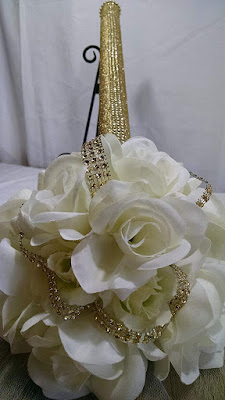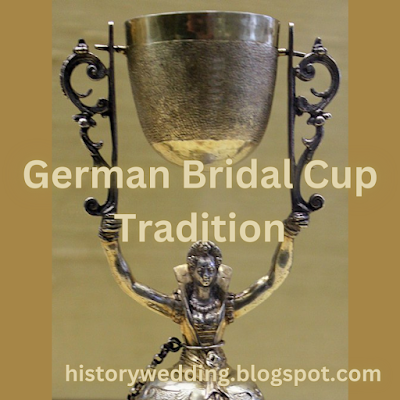Jumping the broom is an historical ritual with Celtic roots. Like many traditions, exactly how and where it started is brought into question. Some say it started with the Romani Gypsy people living in Wales and others say it originated with the Welsh people themselves. Today variations of this ritual are practiced by Welsh, Celtics and Druids as well as the nomadic Romani. In fact, the earliest mention of this tradition is tied to the Romani and dates back to the 18th century. Today, common-law broomstick weddings are still practiced in some parts of Wales as a centuries-old custom called priodas coes ysgub.
Along with this heritage, some say jumping the broom comes from an African marriage ritual which was practiced in the U.S. during the days of slavery when blacks weren't allowed to marry. However, others attribute this as a practice taken from the whites. Either way, secret ceremonies were held as black couples committed themselves to each other by stepping over a broomstick in front of family and friends.
Now the tradition is practiced as a folk tradition in various parts of the world from Eastern Europe to the Americas.
Besom broom used for broom jumping
Today, jumping the broom is thought to represent the couple entering a new life together, and sweeping away their single lives including former problems and concerns.
4 jumping the broom variations
- Place the broom at an angle by the rear door of the church.
- Groom jumps first, followed by the bride.
- Broom laid on floor and couple jumps over it hand-in-hand as high as they can.
- Broom laid in the entryway to the new home with bride and groom taking turns jumping over it. (Another variation of this one is for the groom to carry his bride over the broom into their new home.)
Another old custom involves the couple jumping over a crossed broom and sword held by the best man and the maid of honor. This practice represents cutting of ties to parents and the ties being swept away as the couple crosses a new threshold to start a new life together.
Today couples jumping the broom often design their own broom and decorate them to complement wedding colors, or they can be purchased already-decorated.
Some who want to eliminate the broom because of its Wiccan associations may choose to step over a sword instead of a broom.
 |
Tajiri 36" Jump Broom for Wedding |
Some who want to eliminate the broom because of its Wiccan associations may choose to step over a sword instead of a broom.
***
Some links in this post are affiliate links. We are a participant in the Amazon Services LLC Associates Program, an affiliate advertising program designed to provide a means for us to earn fees by linking to amazon.com and affiliate sites.
















